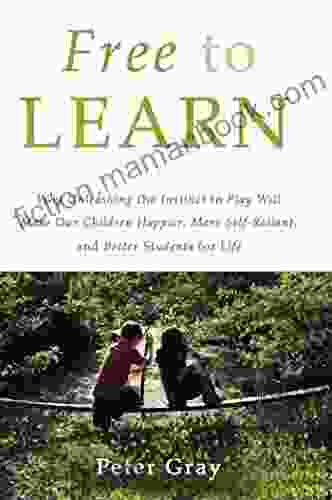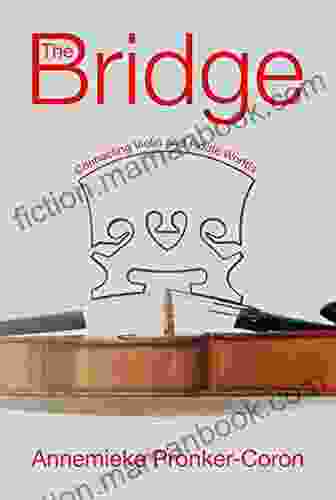Unlocking the World of Music: A Comprehensive Guide to Basic Music Reading Skills

Music, an art form that transcends time and cultures, has the power to evoke myriad emotions, paint vivid sonic landscapes, and connect us on a profound level. At the heart of this captivating world lies the ability to read music, a skill that empowers us to unlock the secrets hidden within musical scores.
4.7 out of 5
| Language | : | English |
| File size | : | 12272 KB |
| Text-to-Speech | : | Enabled |
| Screen Reader | : | Supported |
| Enhanced typesetting | : | Enabled |
| Print length | : | 353 pages |
| Lending | : | Enabled |
Understanding the Language of Music
Just like spoken languages have their own unique alphabets and grammar, music has its own system of notation. This musical language, composed of symbols, shapes, and lines, provides a standardized method of representing melodies, harmonies, and rhythms.
By learning the basics of music reading, we gain the ability to translate these symbols into sounds, enabling us to perform, compose, and appreciate music to its fullest extent.
Essential Components of Music Reading
- Musical Staff: The five horizontal lines and four spaces that serve as the framework for musical notation.
- Clefs: Symbols that indicate the specific pitch range of notes on the staff (e.g., treble clef, bass clef).
- Notes: Symbols that represent different musical pitches.
- Rests: Symbols that indicate periods of silence.
- Rhythms: Patterns of notes and rests that create the timing and flow of music.
- Time Signature: A symbol that indicates the number of beats per measure and the type of note that receives one beat.
- Key Signature: A group of sharps or flats at the beginning of a musical staff that indicates the key of the piece.
Deciphering the Treble Clef
The treble clef, also known as the G clef, is commonly used for higher-pitched instruments and voices, such as violins, flutes, and sopranos. To understand the notes on the treble staff, follow these steps:
- Identify the line or space where the treble clef symbol resides. This is the line for the note G4.
- Memorize the mnemonic "Every Good Boy Does Fine" (from bottom to top) for the notes on the lines.
- Use the spaces to fill in the notes in between, following the order FACED.
Navigating the Bass Clef
The bass clef, also called the F clef, is typically used for lower-pitched instruments and voices, such as cellos, trombones, and basses. To decipher notes on the bass staff:
- Find the line or space where the bass clef symbol begins. This is the line for the note F3.
- Remember the mnemonic "Father Charles Goes Down And Ends Battle" (from bottom to top) for the lines.
- Use the spaces to complete the notes in between, following the order All Cows Eat Grass.
Comprehending Time Signatures
Time signatures indicate the rhythmic structure of a musical piece. They consist of two numbers stacked vertically:
- Top number: Indicates the number of beats in each measure.
- Bottom number: Specifies the type of note that receives one beat (e.g., 4 = quarter note, 8 = eighth note).
For example, a time signature of 4/4 means there are four beats in each measure, and each quarter note receives one beat.
Understanding Key Signatures
Key signatures establish the tonal center of a musical piece. They consist of sharps or flats placed at the beginning of the musical staff:
- Sharps: Raise the pitch of notes by a half step.
- Flats: Lower the pitch of notes by a half step.
The order of sharps and flats follows a specific pattern, helping musicians quickly identify the key of the piece.
Practice Makes Perfect
Mastering music reading skills requires consistent practice and dedication. Here are some tips to accelerate your progress:
- Regular Reading: Engage with sheet music daily to develop fluency.
- Slow and Steady: Start with simple pieces and gradually increase complexity.
- Use a Metronome: Practice with a metronome to improve rhythm accuracy.
- Listen and Analyze: Listen to musical recordings and analyze the notation to enhance understanding.
- Seek Feedback: Get feedback from a teacher or more experienced musician to identify areas for improvement.
Unlocking the world of music through reading skills is a transformative experience that empowers us to connect with the vast repertoire of musical masterpieces. By embracing the essential components of music notation, including the treble and bass clefs, time signatures, and key signatures, we gain the confidence to read, perform, and appreciate music at a deeper level. Remember, with patience, practice, and a passion for music, the journey to musical literacy is one filled with endless rewards.
4.7 out of 5
| Language | : | English |
| File size | : | 12272 KB |
| Text-to-Speech | : | Enabled |
| Screen Reader | : | Supported |
| Enhanced typesetting | : | Enabled |
| Print length | : | 353 pages |
| Lending | : | Enabled |
Do you want to contribute by writing guest posts on this blog?
Please contact us and send us a resume of previous articles that you have written.
 Top Book
Top Book Novel
Novel Fiction
Fiction Nonfiction
Nonfiction Literature
Literature Paperback
Paperback Hardcover
Hardcover E-book
E-book Audiobook
Audiobook Bestseller
Bestseller Classic
Classic Mystery
Mystery Thriller
Thriller Romance
Romance Fantasy
Fantasy Science Fiction
Science Fiction Biography
Biography Memoir
Memoir Autobiography
Autobiography Poetry
Poetry Drama
Drama Historical Fiction
Historical Fiction Self-help
Self-help Young Adult
Young Adult Childrens Books
Childrens Books Graphic Novel
Graphic Novel Anthology
Anthology Series
Series Encyclopedia
Encyclopedia Reference
Reference Guidebook
Guidebook Textbook
Textbook Workbook
Workbook Journal
Journal Diary
Diary Manuscript
Manuscript Folio
Folio Pulp Fiction
Pulp Fiction Short Stories
Short Stories Fairy Tales
Fairy Tales Fables
Fables Mythology
Mythology Philosophy
Philosophy Religion
Religion Spirituality
Spirituality Essays
Essays Critique
Critique Commentary
Commentary Glossary
Glossary Bibliography
Bibliography Index
Index Table of Contents
Table of Contents Preface
Preface Introduction
Introduction Foreword
Foreword Afterword
Afterword Appendices
Appendices Annotations
Annotations Footnotes
Footnotes Epilogue
Epilogue Prologue
Prologue Marc Gregoire
Marc Gregoire Henry David Thoreau
Henry David Thoreau Lynne Olson
Lynne Olson Helen Baumann
Helen Baumann Stanley Moss
Stanley Moss Scott Schell
Scott Schell Laura Ann
Laura Ann Charisse Allen
Charisse Allen Todd E Petzel
Todd E Petzel Hamish Coates
Hamish Coates Jeanne Felfe
Jeanne Felfe Michael Boulerice
Michael Boulerice Stephen Allan
Stephen Allan Rogervan Rubattino
Rogervan Rubattino Eivor Martinus
Eivor Martinus Hazel Linwood
Hazel Linwood Eric Balchunas
Eric Balchunas Mrs Serena
Mrs Serena Kamran Afary
Kamran Afary Camilla Townsend
Camilla Townsend
Light bulbAdvertise smarter! Our strategic ad space ensures maximum exposure. Reserve your spot today!
 Osamu DazaiFollow ·9.8k
Osamu DazaiFollow ·9.8k Jack LondonFollow ·9.5k
Jack LondonFollow ·9.5k William FaulknerFollow ·4.8k
William FaulknerFollow ·4.8k Miguel de CervantesFollow ·8.9k
Miguel de CervantesFollow ·8.9k Floyd PowellFollow ·13.7k
Floyd PowellFollow ·13.7k Matthew WardFollow ·13.2k
Matthew WardFollow ·13.2k Hugh ReedFollow ·17.1k
Hugh ReedFollow ·17.1k Caleb CarterFollow ·16.7k
Caleb CarterFollow ·16.7k

 Abe Mitchell
Abe MitchellWhy Unleashing the Instinct to Play Will Make Our...
Play is an essential part of childhood. It is...

 Rubén Darío
Rubén DaríoTheory in Health Promotion Research and Practice
Theory is essential...

 Howard Blair
Howard BlairFailing Students or Failing Schools: Uncovering the Root...
In the United States, the issue of failing...

 Ira Cox
Ira CoxPoetry From the Heart Chope: A Symphony of Soul and Verse
Embark on a literary...

 Easton Powell
Easton PowellThe Witch Hunt: Wicked Witches of Shadow Woods
In the cursed woods of...
4.7 out of 5
| Language | : | English |
| File size | : | 12272 KB |
| Text-to-Speech | : | Enabled |
| Screen Reader | : | Supported |
| Enhanced typesetting | : | Enabled |
| Print length | : | 353 pages |
| Lending | : | Enabled |














